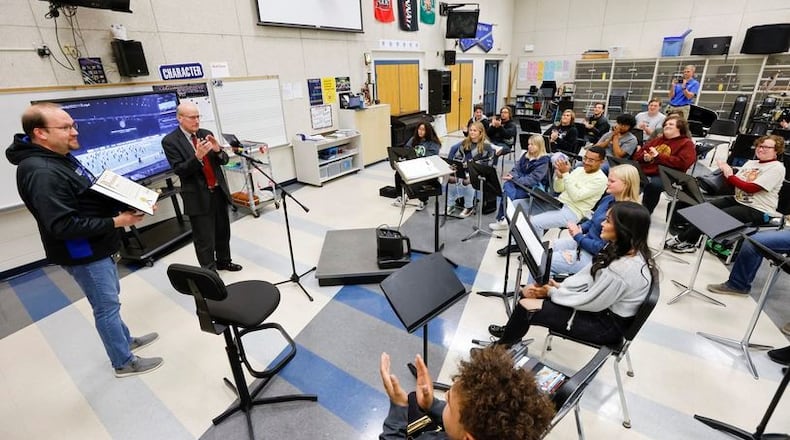The nationwide National Association of Music Merchants (NAMM) organization presents its awards annually and the honor for Hamilton Schools is the latest in recognition for the school system’s music, orchestra and high school marching band programs.
“Music education is vital to the success of the students in our school district now more than ever,” said Ben Spalding, Hamilton’s supervisor of fine arts.
“This is the first time ever that our school district has received this distinction and it will go a long way in letting our community know that we are committed to our students and their education in the arts,” said Spalding.
In recent years a variety of Hamilton school music programs and individuals have increasingly been honored for their successes both within the city and from regional and national organizations.
In November, Hamilton Mayor Pat Moeller hand-delivered a city proclamation to Marching Band Director Paul Dixon and his students in the school’s band room trumpeting their hard work for bringing home the program’s first top-rated performance rating from a state band contest in Piqua.
It was the first, state superior and unanimous rating ever for the beloved Marching Big Blue band, which is annually a point of pride for the entire city community. The band also earned a superior rating at all other state band contests this year.
Pat Naylor, Hamilton band teacher for grades 7-12, said: “Through the process of music education, our students develop not only a deep understanding and love for music but the life skills necessary to be successful and positively impact the communities our students will live in once they leave the Hamilton City Schools.”
“I am proud of the growth and product our students produce and thankful for the music education my students are provided,” said Naylor.
According to NAMM officials, to qualify for the Best Communities designation, Hamilton City Schools answered detailed questions during the award review process.
Hamilton Schools provide a full range of educational programs and services. These
include preschool, elementary, and secondary curriculum offerings at the general, college preparatory and vocational levels along with a broad range of co-curricular and extra-curricular activities;
Questions focused on funding, graduation requirements, music class participation, instruction time, facilities, support for the music program and community music-making programs. Responses were verified by school officials and reviewed by The Music Research Institute at the University of Kansas.
About the Author

